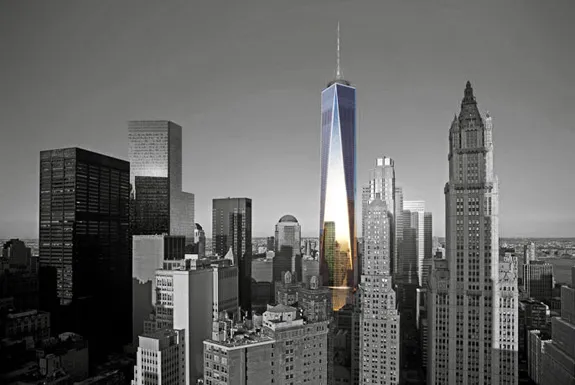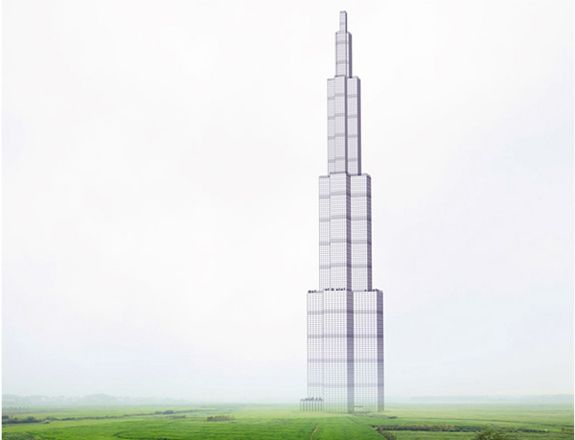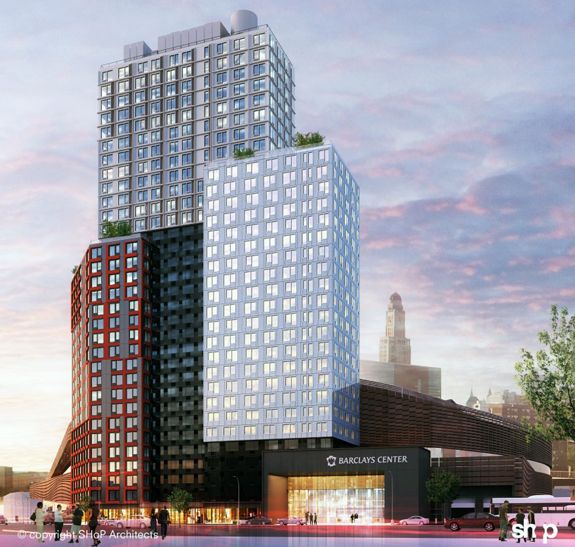Architecture to Watch in 2013
Whether they’re breaking ground or topping off, these are the biggest building projects we’ll be watching in 2013
/https://tf-cmsv2-smithsonianmag-media.s3.amazonaws.com/filer/20121226034029SFMOMA_Snohetta1.jpg)
Before we put 2012 behind us, we thought it would be fun to take a quick look at some of the building projects we’re looking forward to in 2013. Whether they’re breaking ground, topping off, or, as is the case with one incredible building in China, breaking ground and topping off, these structures represent important technological and cultural advancements in architecture.
SFMOMA
A project that will be starting construction in the coming year (after an important exhibition of the work of the recently deceased Lebbeus Woods) is the ambitious expansion of the San Francisco Museum of Modern Art. Designed by award-winning Oslo-based firm Snøhetta, the new structure will rise behind the Mario Botta-designed original building, providing a striking backdrop for the brick structure and more than doubling the size of the museum. The expansion includes new pedestrian spaces and entrances that open the museum to the city on all sides, new (and free!) street-level galleries, several large outdoor terraces and a new sculpture garden. A primary function of the striated addition is to accommodate the new Fisher Collection, donated by the late GAP founder Don Fisher after a controversial and ultimately unsuccessful attempt to build his own museum in San Francisco’s Presidio. Snøhetta’s sleek contemporary design is a shocking departure for a city that’s famous for its architectural conservatism.
One World Trade Center

This is the big one. After more than a decade of debate, design, redesign, and re-redesign, One World Trade Center will finally reach its full height in 2013. At a symbolic 1,776 feet (more or less, depending on how you measure it), the 104-story tower will the be the tallest building in the country. The design is underwhelming to say the least, but that’s to be expected when there are so many opposing concerns – commercial, familial, memorial, symbolic – that need to be addressed. The important thing is that it’s built. And New Yorkers will once again have an urban compass to orient themselves in the city.
Sky City

When it finishes construction in March 2013, Sky City will be the tallest building in the world. And the Chinese tower will go from zero to 220 stories in just 90 days. Built by Broad Sustainable Building, the five-floor-per-day rate is made possible by the use of an innovative construction module, replete with preinstalled ducts, plumbing, and electricity. BSB previously made air conditioners but their chairman was inspired to completely change his business model and redirect the company’s massive infrastructure toward the search for a more reliable construction method after the 2008 earthquake in China’s Sichuan Province. After much trial and error, he found his answer in modular construction, which is not only safer, but also cheaper and quicker to construct. Previsouly, Broad have built 16 modular structures, including a 30-story buildings in 15 days, as seen in a viral video released early this year. But Sky City will by far exceed anything ever imagined with modular construction and Broad hopes that the incredible feat will launch their building system onto the world state, and help make modular construction ubiquitous across the globe.
Atlantic Yards B2

Speaking of modular buildings, there’s a boundary-pushing highrise breaking ground in the United States as well. Designed by SHoP Architects, B2 will be the first of three new residential towers to be built around the new Barclay’s Center as part of the larger Atlantic Yards development in Brooklyn. Like Sky City, the development will be built from modular components and will be the largest of its kind in the United States. The project met with some controversy when local trade unions protested the use of modular techniques because, to over-simplify the matter, it means less work. Construction time will take 18 months, as opposed to 24 months using more traditional methods, and cost approximately 15 percent less to build. B2 broke ground last week, and though it won’t be finished until 2014, we think it merits inclusion on this list due to its groundbreaking contribution to the US construction industry.
/https://tf-cmsv2-smithsonianmag-media.s3.amazonaws.com/accounts/headshot/Jimmy-Stamp-240.jpg)
/https://tf-cmsv2-smithsonianmag-media.s3.amazonaws.com/accounts/headshot/Jimmy-Stamp-240.jpg)